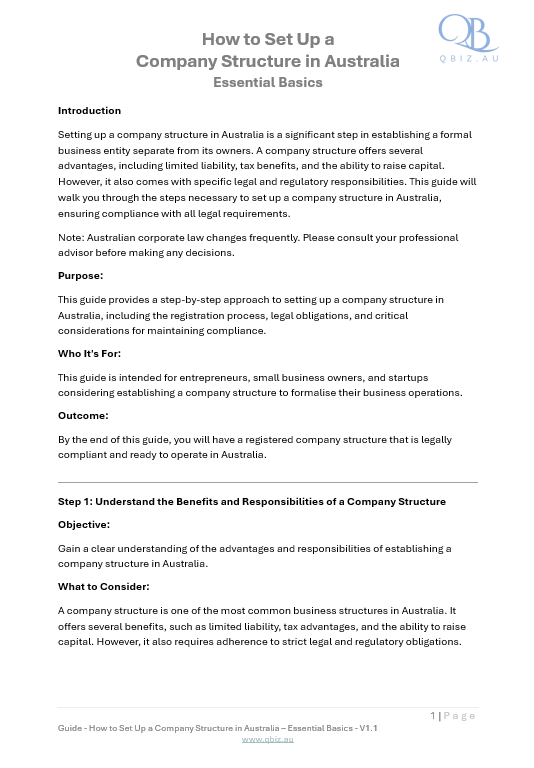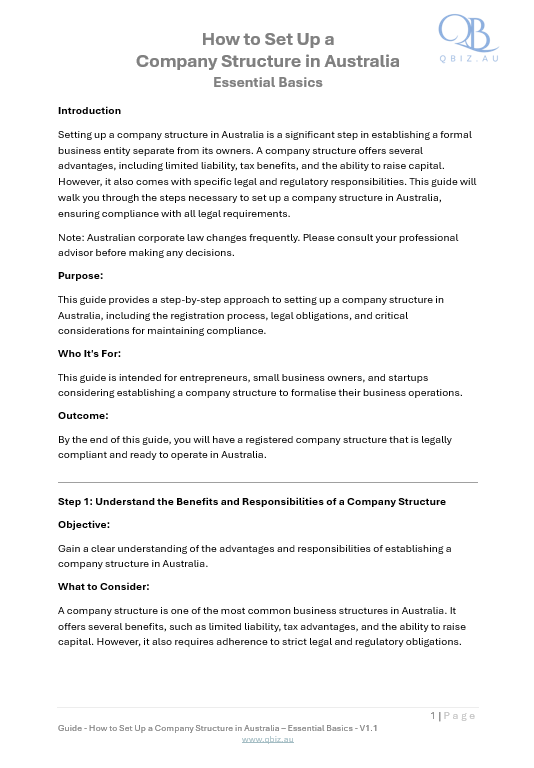Qbiz.AU
How to Set Up a Company Structure in Australia
How to Set Up a Company Structure in Australia
Couldn't load pickup availability
Product Description: The "How to Set Up a Company Structure in Australia" guide is a comprehensive resource for entrepreneurs and small business owners who want to establish a formal company structure. This guide walks you through the process, from choosing the right company name to registering with ASIC and meeting post-registration obligations.
Note: Australian corporate law changes frequently. Please consult your professional advisor before making any decisions.
Word count: 2,456
PDF pages: 11
Audio minutes: 20.21
Key Features & Benefits:
- Step-by-Step Instructions: This section provides detailed guidance on setting up a company, ensuring you meet all legal and regulatory requirements.
- Legal and Tax Insights: This section offers valuable information on the benefits of limited liability, taxation, and the responsibilities of company directors and shareholders.
- Practical Tools: Includes templates and checklists to streamline the registration process and help you maintain compliance.
What's Inside: This downloadable multipage PDF guide covers understanding the benefits of a company structure, choosing a company name, deciding on roles and structure, registering your company with ASIC, and managing ongoing compliance. It also includes a Company Constitution Template, a Shareholders' Agreement Template, and a Company Record-Keeping Checklist. Additional resources may not always be available in the "Essential Basics" version.
FAQ Section:
- Q: Can I convert my sole trader business to a company structure?
- A: You can convert a sole trader business to a company structure by registering a new company with ASIC and transferring your business's assets and operations to the new entity.
- Q: What are the costs of setting up a company in Australia?
- A: The registration fee for a proprietary company is approximately $538, with additional costs for legal fees, accounting services, and ongoing compliance.
- Q: How do I choose between proprietary and public companies?
- A: A proprietary company is suitable for small to medium-sized businesses with up to 50 non-employee shareholders, while a public company is better for larger businesses that wish to raise capital from the public.
Download this version Now! To set up your company structure quickly and efficiently. Use our comprehensive guide to establish your business with confidence!
Share with a colleague




